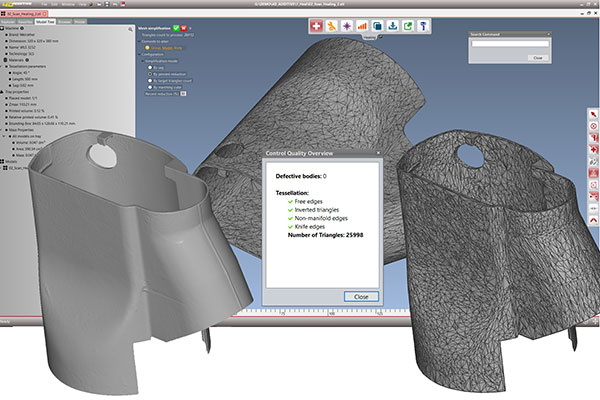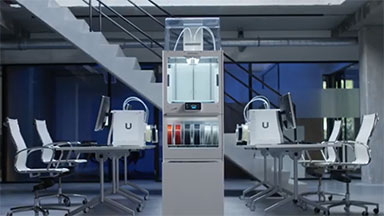Repair STL and Scan Data With a Button
The 4D_Additive 1.4 software has functions to close the tessellated models into "watertight" solids.

The latest version of 4D_Additive has a tool to simplify tessellated files and turn them into closed solids in a short time. Image courtesy of CoreTechnologie.
April 26, 2022
With a new function called “Marching Cube,” the latest version of CoreTechnologie's 3D printing software 4D_Additive now repairs and simplifies 3D scan data and STL files into closed volumes.
The latest version of the 3D printing software 4D_Additive of the German-French software manufacturer CoreTechnologie has a tool to simplify tessellated files and turn them into closed solids in a short time. The feature allows any type of triangulated 3D model to be automatically corrected and prepared for 3D printing.
Simplified 3D Print Preparation
The 4D_Additive 1.4 software has functions to close the tessellated models into “watertight” solids and intelligently mesh reduction functions to reduce the number of triangles without losing accurracy. These new features called Marching Cube and Mesh Simplification allow any type of triangulated, mostly STL data, to be automatically corrected and simplified at the touch of a button.
Fast Repair of Scan Data
With the Marching Cube function, faulty STL models and scan data can be repaired and transformed into closed solids essentially at the push of a button. The function saves on time-consuming manual repair. The Marching Cube function combines a “voxelization” of parts with their repair, where the size of the voxel, that is, cube, and fineness can be defined by the user. After adaptive filling of the part volume with voxels, the so-called voxilization, a closed 3D mesh is generated. The 4D_Additive software repairs models with hundreds and thousands of triangulation defects fully automatically within a few seconds.
The user has access to various options for intelligent reduction of triangles. By defining a maximum angle between triangles, the maximum chord deviation, by percentage reduction or by defining the desired number of triangles the filesize and complexity of triangulated models can be reduced easily.
Use of the two new functions makes it possible to repair any type of scanned part without manual effort, creating printable solids with a reasonable file size and resolution from scans and faulty STL models in a short time.
The new 3D printing software version is available now.
Sources: Press materials received from the company and additional information gleaned from the company’s website.
More CoreTechnologie Coverage
Subscribe to our FREE magazine, FREE email newsletters or both!
About the Author
DE’s editors contribute news and new product announcements to Digital Engineering.
Press releases may be sent to them via [email protected].





